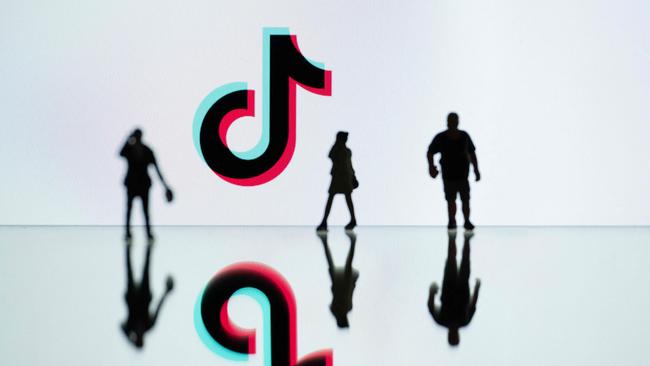TikTok joins fight against fake AI news, joining Adobe-led coalition
The controversial Chinese-owned video sharing platform says it has become the world’s first social media network to automatically label AI generated content, leaping ahead of Meta.

TikTok will become the first social media platform to automatically label content generated via artificial intelligence to help combat concerns about deepfakes and online misinformation ahead of one of the world’s biggest election years.
The controversial Chinese-owned video sharing site has joined a coalition of media and technology companies, led by Adobe, that is pushing for greater transparency on AI generated images and other content.
Social media companies are under increasing pressure to stamp out fake news on their platforms, with Facebook owner Meta facing strong criticism over its stance to abolish media content deals in Australia and Canada.
Meta is not a member of the group – which calls itself the Coalition for Content Provenance and Authenticity – and has been disentangling itself from mainstream news. The Mark Zuckerberg-led tech giant is gradually phasing out CrowdTangle — a service used by news outlets, academic researchers, and regulators worldwide to monitor viral content and misinformation across social media — and will abandon it completely on August 14.
Adam Presser, TikTok head of operations, said it joined the coalition because while AI enabled “incredible creative opportunities” it can “confuse or mislead viewers if they don’t know content was AI-generated”.
“AI-generated content is an incredible creative outlet, but transparency for viewers is critical. By partnering with peers to label content across platforms, we’re making it easy for creators to responsibly explore AI-generated content while continuing to deter the harmful or misleading AIGC that is prohibited on TikTok,” Mr Presser said.
The move comes as TikTok is fighting in the courts to overturn a newly signed US law that could see its popular app banned due to allegations it is controlled by the Chinese government.
US and other Western officials have alleged the social media platform allows Beijing to collect data and spy on users. It has 170 million users in the United States alone, many of them young.
Anthony Albanese said in March that his government has “no plans” to ban TikTok in Australia, but will establish a Joint Parliamentary Select Committee into the impact and influence of social media. The committee will investigate social media’s ability to spread misinformation and how algorithms and recommender systems impact what content is served to Australians, and how it in turn can affect people’s mental health.
Adobe chief trust officer Dana Rao applauded TikTok’s decision to join the Coalition for Content Provenance and Authenticity (C2PA), which was co-founded by Adobe and Microsoft and counts Google, OpenAI and the BBC among its members.
“With TikTok’s vast community of creators and users globally, we are thrilled to welcome them to both the C2PA and CAI (the Adobe-led Content Authenticity Initiative) as they embark on the journey to provide more transparency and authenticity on the platform,” Mr Rao said.
“At a time when any digital content can be altered, it is essential to provide ways for the public to discern what is true. Today’s announcement is a critical step towards achieving that outcome.”
Over the coming months, TikTok will also start attaching Content Credentials to AI generated content created on its platform.
Adobe has likened the credentials to a “nutrition label”. “Content credentials are tamper-evident metadata that can be attached to digital content to show you what has gone into creating or editing it, including who made it, when it was made, where it was made, and what changes were made to it along the way. It can also tell you if a content was created or edited with AI,” Adobe said.
“Content credentials are a combination of cryptographic metadata and watermarking – which ensures this information is securely attached and travels with the content wherever it goes. These tools are more important than ever, as powerful technology like AI makes it easier for anyone to create and alter digital content.”






To join the conversation, please log in. Don't have an account? Register
Join the conversation, you are commenting as Logout